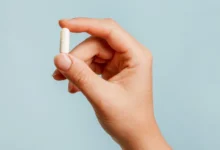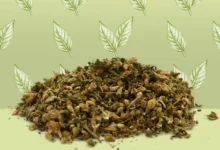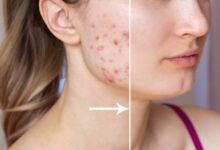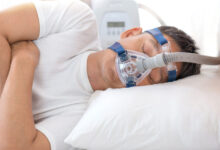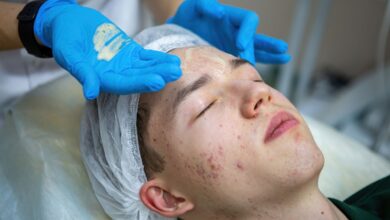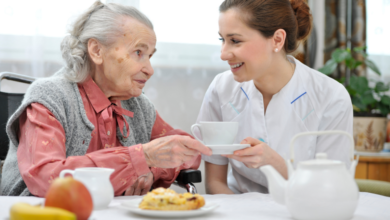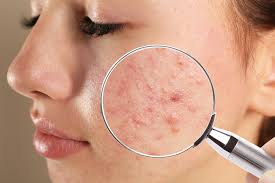
Affordable Acne Treatment: Evidence-Based Options That Work
Does your acne worsen during Singapore’s humid months, leaving you frustrated with ineffective treatments? Acne occurs when hair follicles become clogged with oil and dead skin cells, leading to whiteheads, blackheads, and inflammatory lesions. Singapore’s humid climate creates additional challenges for acne management, as increased sweat and oil production can worsen breakouts throughout the year. Finding affordable acne treatment Singapore options is essential for those looking for effective care without overspending. Acne treatment combines skincare, prescription medications, and clinical procedures tailored to individual skin types and acne severity. Treatment starts with proper diagnosis to avoid spending on ineffective products and focuses on evidence-based approaches that target the root causes of acne formation.
Table of Contents
Understanding Acne Severity and Treatment Pathways
Dermatologists classify acne into grades to determine appropriate treatment protocols:
- Grade 1 involves primarily comedones (blackheads and whiteheads) without inflammation
- Grade 2 includes papules and pustules with mild inflammation
- Grade 3 presents with nodules alongside pustules
- Grade 4 involves severe cystic acne with significant scarring risk
Mild acne often responds to topical treatments. Moderate acne typically requires combination therapy including both topical and oral medications. Severe acne may require isotretinoin therapy or clinical procedures.
Treatment selection depends on several factors beyond severity:
- Skin type influences product formulation choices – oily skin tolerates stronger concentrations while sensitive skin requires gentler approaches
- Previous treatment history helps identify what hasn’t worked, preventing repeated investment in ineffective options
- Hormonal factors, particularly in female patients, may indicate specific treatment pathways including hormonal therapy options
Topical Treatments and Their Costs
Benzoyl peroxide remains a cornerstone of acne treatment, available in 2.5%, 5%, and 10% concentrations. The 2.5% concentration may provide similar efficacy to higher strengths with less irritation. Pharmacy brands and medical-grade formulations are available at varying price points.
Retinoids work by normalizing skin cell turnover and preventing pore blockage. Adapalene 0.1% became available over-the-counter in many formulations. Prescription retinoids like tretinoin are also available. Application technique matters – starting with twice-weekly application and gradually increasing prevents excessive irritation that leads to treatment discontinuation.
Salicylic acid products penetrate oil to unclog pores. Cleansers containing 2% salicylic acid are widely available and last approximately two months with twice-daily use. Leave-on treatments provide prolonged contact time. Combining salicylic acid cleansers with benzoyl peroxide spot treatments addresses both pore blockage and bacterial growth.
Azelaic acid offers anti-inflammatory and antimicrobial benefits with minimal irritation. Prescription formulations at 15-20% concentration are available. This ingredient may benefit patients with post-inflammatory hyperpigmentation, addressing both active acne and dark marks.
Oral Medications for Moderate to Severe Acne
Oral antibiotics target *Cutibacterium acnes* bacteria and reduce inflammation. Treatment duration usually spans 3-4 months to prevent antibiotic resistance. Combining oral antibiotics with topical retinoids may enhance efficacy while potentially shortening treatment duration.
Hormonal therapy may benefit female patients with hormonally-driven acne. Combined oral contraceptives often improve acne within 3-6 months. Spironolactone, an anti-androgen medication, may be prescribed for this condition. The appropriate dosage should be determined by a healthcare professional. These medications require consistent use for maintained benefits.
Isotretinoin treats severe or treatment-resistant acne through sebum reduction and skin cell normalization. Treatment duration should be determined by a healthcare professional. Isotretinoin may provide long-term remission for severe cases.
Did You Know?
Isotretinoin works by significantly shrinking sebaceous glands, explaining why many patients experience lasting improvement even after completing treatment.
Treatments at Aesthetic Clinics
Chemical peels accelerate skin exfoliation and unclog pores using controlled acid applications. Salicylic acid peels target acne, with patients typically requiring several sessions at regular intervals. Glycolic acid peels address both acne and textural concerns. Post-peel care requires sun protection and gentle skincare to optimize results.
LED light therapy targets acne through different mechanisms. Blue light (415nm wavelength) destroys *C. acnes* bacteria, while red light (633nm) reduces inflammation. Treatment packages are commonly offered, and home LED devices provide an alternative for ongoing use, though clinic devices deliver higher light intensity.
Extraction and comedone removal sessions are available at aesthetic clinics. Trained extraction can help prevent scarring compared to self-extraction attempts. Regular maintenance extractions may help control comedonal acne when combined with appropriate home care.
Carbon laser treatments combine carbon lotion application with Q-switched laser energy. The carbon particles absorb laser energy, creating controlled exfoliation and pore cleansing. Multiple treatments are typically recommended initially. This treatment may suit patients with oily skin and enlarged pores alongside active acne.
Combination Approaches for Cost-Effective Results
Strategic treatment combination may provide improved results compared to single therapies while managing costs. A combination may include:
- Benzoyl peroxide in the morning
- Retinoid at night
- Salicylic acid cleanser twice daily
For inflammatory acne, combining oral antibiotics with topical retinoids, then maintaining with retinoids alone, may help balance efficacy with cost management. A healthcare professional can determine appropriate treatment duration.
Professional treatments complement home care rather than replacing it. Monthly chemical peels while maintaining consistent topical therapy may help improvement. After achieving clearance, spacing professional treatments to quarterly maintenance may reduce long-term costs. A healthcare professional can advise on appropriate treatment frequency.
Important Note
Consult a healthcare professional before combining benzoyl peroxide and retinoids in the same routine, as benzoyl peroxide can deactivate certain retinoid formulations, potentially reducing efficacy.
What Our Aesthetic Doctor Says
Successful acne treatment requires patience and consistency rather than constantly switching products. Most topical treatments require 6-12 weeks to show significant improvement, and premature discontinuation wastes both time and money.
Starting with affordable, evidence-based options allows assessment of your skin’s response before investing in costlier treatments. Many patients achieve good results with disciplined use of pharmacy-available products when properly selected and applied.
Professional assessment becomes valuable when over-the-counter options fail after adequate trial periods, scarring develops, or cystic lesions appear. Early intervention for inflammatory acne prevents permanent scarring, making professional consultation beneficial long-term despite higher initial investment.
Treatment plans should evolve with improvement – initial therapy followed by gentler maintenance prevents both relapse and unnecessary ongoing costs.
Putting This Into Practice
- Map your breakout patterns in a diary for two weeks, noting timing, location, and potential triggers to identify whether your acne follows hormonal patterns or relates to specific products or habits
- Start with single active ingredients rather than multiple products simultaneously, introducing new treatments every 2-3 weeks to identify what works for your skin
- Apply treatments to entire acne-prone areas, not just visible lesions, since microcomedones form weeks before becoming visible
- Photograph your skin weekly under consistent lighting to objectively track improvement, as gradual changes often go unnoticed day-to-day
- Calculate per-day treatment costs to compare options – a $150 treatment lasting 3 months costs less daily than a $40 product lasting 3 weeks
When to Seek Professional Help
- Cystic or nodular lesions that feel deep under the skin
- Acne leaving dark marks or indented scars despite treatment
- No improvement after 12 weeks of consistent over-the-counter treatment
- Acne significantly impacting self-esteem or daily activities
- Unusual acne patterns or sudden adult onset requiring hormonal evaluation
- Severe irritation or allergic reactions to multiple products
- Acne concentrated along jawline and chin in females, suggesting hormonal component
Commonly Asked Questions
How long before I see results from acne treatment?
Most topical treatments require 6-12 weeks for visible improvement, with continued improvement over 3-4 months. Oral antibiotics may show initial improvement within 2-3 weeks, while isotretinoin often causes temporary worsening before improvement begins around week 4-6. Professional treatments like chemical peels show gradual improvement over multiple sessions.
Can I use expired acne products to save money?
Expired products lose potency and may harbor bacteria, potentially worsening acne or causing irritation. Benzoyl peroxide degrades into benzoic acid, losing antibacterial properties. Retinoids become less effective when exposed to air and light over time.
Should I consider skincare devices for home use?
Home devices offer convenience and long-term savings for maintenance treatment. Professional treatments deliver higher intensity and combine multiple modalities. Consider starting with professional treatments to establish improvement, then maintain with home devices.
Why does my acne worsen during initial treatment?
Purging occurs when treatments accelerate skin cell turnover, bringing existing microcomedones to the surface faster. This temporary worsening typically peaks at weeks 2-4, resolving by week 6-8. True irritation presents as widespread redness, burning, or hives requiring treatment modification.
Can diet changes replace acne medication?
While some patients notice improvement with dietary modifications, particularly reducing high-glycemic foods and dairy, diet alone rarely resolves moderate to severe acne. Dietary changes work well as adjunctive therapy alongside appropriate medical treatment, potentially allowing lower medication doses or improved maintenance.
Next Steps
Treatment success requires proper acne classification and evidence-based product selection. Begin with consistent topical therapy for 6-12 weeks before adding oral medications. Professional treatments become necessary when over-the-counter options fail or scarring develops.
If you are experiencing persistent cystic acne, inflammatory lesions unresponsive to topical treatments, or early scarring, consult an aesthetic doctor for comprehensive evaluation and targeted treatment plans.

